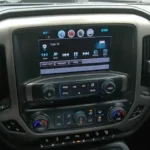Sunroof leaks in Ford Explorers can be a distressing issue. As an owner, you might confront water intrusion during rainy days, potentially damaging your vehicle’s interior. In many cases, clogged drains or compromised sunroof seals are the culprits. Understanding the causes and remedies for this issue can save you time and costly repairs.
To tackle a sunroof leak in your Ford Explorer, it’s essential to identify the root cause, whether it’s a faulty seal or clogged drainage. In the following sections, we will discuss practical steps to fix these issues and safeguard your Explorer’s interior.
Causes of Sunroof Leaks in Ford Explorers
Faulty Seal
One of the primary reasons for sunroof leaks in Ford Explorers is a faulty seal. If the seal around your sunroof is damaged or worn out, it can allow water to seep in, causing leaks. It’s essential to inspect the seal for any signs of wear or damage and have it replaced if necessary to prevent water from entering your vehicle.
Blocked Drain Tubes
Another common cause of sunroof leaks is blocked drain tubes. Your sunroof has drainage tubes to allow water to flow out of the vehicle and prevent water from entering. If debris, such as leaves or dirt, accumulates in these drain tubes, it can result in water backup, causing your sunroof to leak. Ensure you regularly clean and maintain your drainage system to prevent water leaking into your Ford Explorer.
Defective Parts
Defective parts may also contribute to sunroof leaks. If any components of the sunroof are damaged or not functioning correctly, it may cause water to leak. In some cases, even a new Ford Explorer can experience these issues if the parts are faulty from the factory or assembly process. It’s crucial to have your car thoroughly inspected if you suspect that a defective component is the cause of the leak to rectify the issue.
Implication of Weather
Weather can play a significant role in sunroof leaks as well. Heavy downpours, hail, or extreme temperature changes can put stress on your sunroof seal and other components, increasing the likelihood of a leak. Be mindful of your vehicle’s exposure to these conditions and inspect your sunroof regularly to ensure it’s in good condition.
User Errors
Sometimes, sunroof leaks in Ford Explorers can be attributed to user error. Improperly closing the sunroof or attempting to force it open or closed can damage the seal and other components, leading to leaks. Always be gentle when operating your sunroof and make sure it’s correctly closed and sealed when not in use.
Console Issues
In some cases, sunroof leaks can result from problems with the overhead console. A malfunctioning console can cause the sunroof to remain partially open or not close properly, leading to water leaking in. If you experience issues with your console and your sunroof, it’s essential to have a professional diagnose and repair the problem to prevent further leaks.
By understanding the common causes of sunroof leaks in Ford Explorers and taking preventative steps, you can help to keep your vehicle dry and avoid potential damage from water infiltration. Regular inspections and maintenance of your sunroof components will ensure they’re in proper working order and reduce the likelihood of leaks.
How to Detect Leaks
Inspection of Headliner
To detect leaks in your Ford Explorer sunroof, start by inspecting the headliner, which is the fabric material covering the interior roof of your vehicle. Look for any signs of water stains or dampness that may indicate a leak. Carefully run your hand along the headliner, feeling for any wet or damp spots. If you find any, there is a possibility of water leaking through the sunroof.
Checking the Spare Tire Well
Another area to check for water leakage is the spare tire well located in the trunk of your Ford Explorer. Open the trunk and remove any belongings inside to fully inspect the spare tire well. Look for pooling water or moisture on the surface, as this can be an indication of a sunroof leak. If you find water in the spare tire well, it’s essential to take the necessary steps to fix the leaking sunroof.
Examination of Lights
Lastly, examine the interior lights near the sunroof, such as the dome lights and the lights in the vanity mirrors on the sun visors. Check for any signs of water damage, such as condensation or moisture inside the light fixtures. If you detect water or signs of water damage, this could indicate a sunroof leak. Addressing the issue promptly is crucial to prevent further damage to your vehicle’s electrical components.
How to Address the Problem
Dealing with the Dealer
If you’re experiencing a sunroof leak issue with your Ford Explorer, it’s always best to contact your local dealer first. They can diagnose the problem and determine if it’s covered under your vehicle’s warranty. Some leaks may result from manufacturing defects, which the dealer should resolve without any cost to you. Remember, regular service and maintenance checks can help prevent such issues in the long run.
Recall Options
Before taking any further action, it’s essential to check whether there are ongoing recalls related to your Ford Explorer’s sunroof leak issue. Although not common, some car models may have recalls addressing specific problems. Keep yourself updated on information about recalls through Ford’s official website or the National Highway Traffic Safety Administration’s recall database.
Self-help Remedies
In some cases, you might be able to fix the leak issue by unclogging the sunroof drains yourself. Here are some steps to help you with this process:
- Inspect the drains: Open your sunroof and locate the four drain holes, which are typically located at the corners of the sunroof. Check if they are blocked with debris or dirt.
- Use compressed air: Using a can of compressed air, blow air through the drain holes to remove any debris. Make sure not to overdo it, as it may dislodge the drain tubes.
- Another option, try a flexible brush or wire: If compressed air isn’t effective, try using a flexible brush or a piece of wire to gently clean the holes. Be cautious not to force the tool too far, as this may damage the tubes.
- Test: After cleaning, pour water into the sunroof tray and monitor if it drains properly. If the problem persists, it’s advisable to have a professional help.
By regularly inspecting and cleaning your Ford Explorer’s sunroof drains, you can mitigate the chances of leaks. However, if the leak issue continues or gets worse, consult your dealership or a professional technician to identify the root cause and provide the best solution. Remember, it’s always better to address minor problems before they escalate.
The Impact of Leaks on Other Ford Models
While the Ford Explorer has faced issues with sunroof leaks, it’s essential to be aware of similar problems that have been encountered in other Ford models. One such model that has faced challenges with water leaks is the Ford Expedition.
In some cases, the water leak has affected the liftgate area, causing inconvenience and damage to the vehicle. When water seeps into your car, it can lead to unpleasant odors, mold growth, and damage to the interior. It is vital to take immediate action to resolve this issue, as prolonged exposure to water can result in more severe problems down the line.
To prevent water leaks in your Ford Expedition or any other vehicle, you should regularly inspect seals and gaskets around the sunroof, windshield, and liftgate. If you notice any signs of wear or damage, have them replaced as soon as possible.
Another critical step to avoiding water leaks is to ensure proper drainage, especially around the sunroof. These drainage channels can become clogged with debris, causing water to accumulate and eventually make its way into the vehicle’s interior. Regularly cleaning and checking these drainage channels can help you avoid potential water damage.
In conclusion, while Ford Explorers are known for sunroof leaks, it’s crucial not to overlook similar issues in other Ford models. By being proactive in maintaining your vehicle and addressing any signs of water leakage, you can protect your car’s interior and avoid unnecessary complications in the long run.















